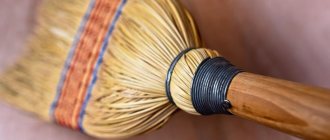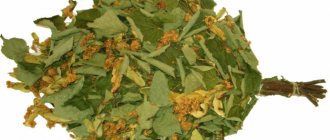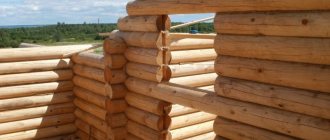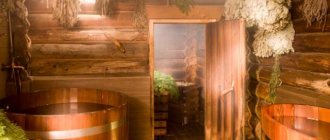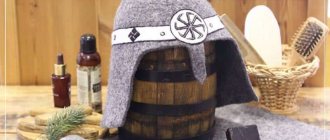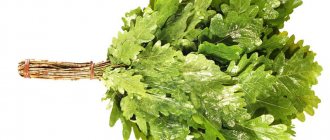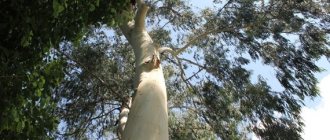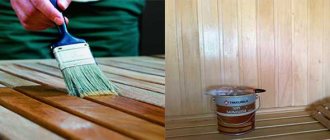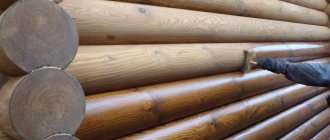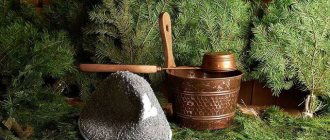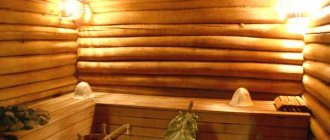The finishing material is made on the basis of natural wood. Environmentally friendly products help create a favorable indoor microclimate. Wood is able to absorb excess moisture and release it when there is a shortage. Natural finishes release a pleasant aroma and fill the space with coziness.
The main advantages of the material are naturalness, ease of processing, resistance to decay, attractive appearance, and increased heat and sound insulation characteristics of the object. It is convenient to hide wires and other communications under the casing.
Advantages of lining
The main advantage of lining is real cost savings . The use of lining allows you to reduce costs in the process of finishing the premises, since there is no need to purchase starting and finishing sandstone, plastering work, etc. It is calculated that in total, plastering work + plaster mortar + sandless sand + work with sandless sand + paint and painting work or wallpaper + wallpapering will cost twice as much (!) as the cost of the lining itself, fasteners and installation work. The ratio will remain the same even if the lining is varnished, which in principle is not always necessary, and in some situations even harmful. Today, it is problematic to offer a cheaper and equally decorative finishing material than lining.
The durability and strength of the finishing coating made of lining are common nouns. The last thing that will require replacement during repairs is the lining, which, as a rule, requires basic restoration work to update. At the same time, this coating retains its fresh appearance for a long time.
The more the lining is in use, the more of its advantages it reveals. Imagine that right in winter, the wall of the house needed to be quickly insulated. Winter and rough work are difficult to combine concepts, but lining is a completely different matter! The lining will allow you to lay the thermal insulation layer quickly and cleanly . The only thing you have to remove is shavings and wood dust. In particular, to insulate the required area of a medium-sized room with a layer of insulation and cover it with clapboard, one day of light is enough for a professional.
The texture of the wood allows you to achieve a harmonious combination of clapboard finishing with any interior style - be it modern, classic, high-tech or oriental. The beauty, reliability, durability and cost-effectiveness of lining make it an indispensable material for both internal and external cladding of dachas, cottages, gazebos, balconies, baths and saunas.
| Lining in the interior. High-tech style | Lining in the interior. Country Style | Lining in the interior. Style Art |
A significant advantage of lining is the ease of connecting individual panels . Joining the covering elements using the tenon-groove principle allows you to significantly reduce the cost of installation, and in addition, get rid of visible joints, resulting in the effect of a solid decorative wooden surface. A monolithic panel assembled using tongue-and-groove technology turns into an insurmountable barrier to dust, polluted air, chipping fragments of plaster and other unwanted by-products of human activity penetrating into the room “from the outside.”
If you have children, then there is a natural desire to avoid children's fingerprints on the walls. An excellent way to solve this issue is to sheathe the entire bottom of the walls to a height of 0.9-1.2 m from the floor. Forget about wallpapering or repainting walls; together with your children, enjoy the presence of this environmentally friendly and visually attractive finishing coating in your home.
To content >>>
Painting lining in the workshop
- Clear varnish
. The array is treated with a means to protect against external influences. - Coloring composition. Before applying clear varnish, a certain tone is applied to the surface.
- Patination. Used to highlight the texture of natural wood. The finishing layer is done using clear varnish.
- Enamel coating
. Lumber is painted with a glassy opaque composition (the color is selected according to the RAL scale). - Oil coating
. Coating of wood material with high quality oil.
The work is carried out taking into account the preferences and wishes of the customer within the established time frame. The company's employees strictly adhere to painting technologies and use high-quality, environmentally friendly imported compounds. Use the services of professionals to emphasize the natural expressiveness of wood and increase its service life!
Classification of lining
Lining is classified, like all finishing lumber, according to several criteria. The most important of them include: classification by profile types, classification by panel sizes, classification by species and type of wood. We will look at each of the classifications below.
Classification of lining by wood type
According to the type of wood, the lining is divided into four classes: “Extra” (or 0), “A”, “B” and “C”. The higher the class of the product, the higher the requirements for it.
Thus, “Extra” grade lining should not include core fragments or any wood defects. Class “A” assumes the absence of a core, but in this case there is a limitation: one live knot for every 1.5 m of length along the front side and no more than 2 blind cracks, and no more than 2 resin pockets.
For class “B” products, the number of falling knots per 1.5 lengths increases to 4 possible, and their size should not exceed 20mm. The presence of up to 2 non-through cracks and 2 resin pockets is allowed. Cracks in grades “A” and “B” should not exceed 1 mm in width and 50 mm in length. Class “B” lining allows the presence of one contrasting spot up to 15 cm in size on the surface of the product. sq. and microtraumas of the wood surface, no more than 3 mm in size.
The size of captive knots in products of class “C” should not exceed 25 mm in diameter. The surface may include non-through cracks not exceeding 5% of the total length of the product. The presence of up to 2 resin pockets up to 5mm wide and up to 50mm long is allowed. The permissible size of the contrast spot is 15 cm. sq., but in addition to it, there may also be individual spots of blue or stripes, with a total volume of up to 5% of the area of the product. The size of fragments of permissible mechanical damage is limited to 6 mm.
| Eurolining. Variety "Extra". Knots, resin pockets and mechanical damage are not allowed | Eurolining. Grade "A". There are no mechanical damages, light knots are acceptable | Eurolining. Grade "B". There are no mechanical damages. Any knots that do not fall out are acceptable |
To content >>>
Classification of lining by wood type
In accordance with the material of manufacture, the lining is classified into boards made from hardwood and softwood. The first category includes ash, oak, alder, aspen, linden and many others. The second includes pine, spruce, larch, cedar, etc. The scope of application of softwood lining is extremely wide. The only rooms in which finishing with coniferous wood paneling is not recommended are saunas and baths, where high temperatures provoke the release of resinous substances. A “sticky board” effect is created, and an increased resin content can cause spontaneous combustion of the material.
The finishing surface made of lining visually aligns the walls, “enlivens” the room, has the ability to naturally regulate humidity, and brings comfort and a sense of security into the atmosphere of the house. Correctly selected lining can be successfully used for interior decoration of premises for any purpose. This is largely possible due to the low thermal conductivity of wood. The exceptional soundproofing qualities of natural wood will provide the home space with additional comfort and coziness. But when installed in a sauna, wooden lining will perfectly retain heat without burning you at all.
The type of wood is selected based on the specifics of the room, functions and load placed on the finishing coating. The most affordable, quite functional and popular solution for cladding both external and internal surfaces is a finishing coating made of pine lining.
To content >>>
Pine paneling
Affordable and durable, impeccable in its decorative qualities, easy to process, pine lining can today be considered the most popular material for interior decoration of premises for a wide variety of purposes. The pattern of the pine lining is diffuse, dispersing attention and allowing the eye to “rest” on its surface.
The lining made of Scandinavian pine deserves special attention, the wood of which has a pinkish tint and is practically free of knots. The pattern formed by the annual rings of Scandinavian pine and spruce has a special decorative effect. This pattern is formed due to the special properties of wood and specific requirements for the choice of raw materials. The fact is that the coniferous species used by the Finns in the production of finishing materials are planted no further south than the 63rd latitude. This condition is explained by the increased density of annual rings in trees growing in these latitudes. In addition, the “winter” and “summer” thickness of the growth rings are almost the same, and the density of the wood is higher than that of pine, which grows, for example, in central Russia.
Larch paneling
The quality of the lining, as is known, is largely determined by the quality of the wood. In this regard, without exaggeration, Siberian larch is a unique, elite material. Approaching the strength of oak, larch has an enviable “immunity” to the effects of pests, and therefore products made from larch practically do not rot, retain their decorative properties for a long time and have a truly unique durability.
Larch lining does not warp or crack even with significant temperature fluctuations. The unique architecture of the Siberian larch trunk allows one to obtain a significantly larger volume of useful material from one tree than from trees of most other species. Add to the listed advantages of larch lining a price that is quite acceptable in comparison with finishing materials of other elite species, and you will get a solution that is justified in all respects.
Canadian cedar paneling
The wood of Canadian cedar, or giant thuja, is a unique antiseptic and, at the same time, an excellent heat resonator. Durable and decorative, lining made from Canadian cedar has unique physical and mechanical properties, the ability to resist fungal bacteria and woodworms, mold, blue stains, and significant temperature changes.
Canadian cedar wood contains essential oils that have a beneficial effect on the human cardiovascular system and upper respiratory tract. The aroma emitted by such lining soothes, relieves accumulated tension and fatigue. They use lining made from Canadian cedar to decorate the most respectable premises and in the construction of elite saunas.
Canadian cedar wood is dense, has a pleasant brown-coffee hue, has a fine, beautiful texture and exudes a pleasant balsamic aroma.
To content >>>
Lining made of Siberian cedar
Lining made from Siberian cedar belongs to the elite category, both due to the noble, memorable texture of the wood, and due to the ability to have a pronounced healing effect on many body systems, the ability not to burn even with strong heating and not to release resin up to 140 degrees. Thanks to its unique resistance to rotting, lining made from Siberian cedar is extremely durable, without losing its decorative qualities throughout its entire service life.
Siberian cedar lining looks great in any room, but this finishing coating demonstrates its maximum capabilities in a sauna, bathhouse or children's room. The light of the wood is light pink, yellowish red, “flesh”, while the sapwood is indistinguishable from the core. The structure is short-wavy, low-shiny, with a characteristic pleasant aroma. The homogeneity of the wood structure makes it easier to process, cut in different directions, bends and polishes quite well, dries out and swells slightly.
Linden lining
About 30 varieties of linden, used as raw material for the production of lining and eurolining, grow in North America, the Caucasus, East Asia, and Crimea. The most valuable rocks are concentrated in places with sufficient moisture levels. The usual age of linden (Tilia - lat.) is 150 years, although in nature there are trees aged 800 and 1000 years. For the production of lining, as a rule, linden wood aged 70–80 years is used. During the drying process, linden wood is easily brought to a moisture content of 8–10%.
Linden wood is soft, contains almost no knots, and is easy to process. In urban conditions, the optimal varieties for the production of finishing materials are Crimean or dark green linden. Linden lining has an exceptional healing effect, it is light, durable and resistant to temperature changes. Linden lining as a finishing material is the first step to longevity. In addition, linden is an excellent natural energy donor.
Linden is a honey plant, which turns lining from it into a unique source of subtle aroma. In addition, linden lining “breathes” and is an excellent sound insulator. Linden wood does not release resin when heated, creating a feeling of warmth and comfort. Linden lining, which retains its healing and decorative qualities in conditions of high humidity, is an ideal material for finishing saunas and baths. It does not release aromatic resins and does not swell.
A unique finishing material is white linden lining. The wood of this type of linden is distinguished by the purest shade of white, while containing a minimal amount of stains that spoil the appearance.
The standard thickness of lime lining is 15mm, working width is 88mm. The length of the panels ranges from 1.0 -3.0 m. Packed in polyethylene, in packs of 10 boards. Please note: the cost and length of the lime lining are inextricably linked. Lining with a length of 0.7 to 1.7 m is approximately 1.4 times cheaper than lining with a length of 2.0 - 3.0 m! That is why, when using shorter lengths of lining when finishing, you not only expand the possibilities for improvisation, but save a decent amount. The best decorative effect when connecting shortened linden lining is achieved through the use of special joining strips made of linden.
To content >>>
Black alder paneling
Alder is a unique material, both in terms of physical and mechanical properties, and in terms of decorative qualities - texture, color and shade of wood. Light coffee, chocolate with marble veins, the color of black alder wood gives this finishing coating noble sophistication and originality. The main advantage of black alder wood, like Caucasian linden, is its resistance to moisture, which allows it to be successfully used as a material for saunas, baths and any other rooms with high humidity, as well as those rooms where thermal conditions are of particular importance.
Fragments of the finishing surface made of alder are perfectly combined with eurolining made of light species - aspen, linden, abashi, etc. The wood of alder, like linden, is soft, uniform, and cuts perfectly. There are practically no cracks in the product. This lining does not warp, does not darken over time, has increased hygroscopicity and low density. The latter quality determines the low weight of the finished product, which means even more comfortable installation.
Oak paneling
The quality of oak wood and its decorative properties have long become common nouns. High strength and durability, unique texture, high density of oak wood allow us to classify lining made from it as elite. In addition to high strength, oak lining is characterized by excellent resistance to rotting.
By choosing oak paneling, you are investing in a reliable, elegant and durable finish. This is exactly the case when the cost of the finishing material pays off many times during its operation.
Classification by profile types
According to this parameter, the lining is divided into “regular” lining and “euro-lining”. The latter differs in the quality of wood and finishing, humidity, profile dimensions and some features of its design.
To content >>>
Product grade
Beautiful and practical
What does the cost of wood products consist of? The quality of raw materials has a huge impact on the price of products. Knots, chips, colored spots and other wood defects in the photo reduce its value:
- The lining is divided into classes A, B, C and “Extra”.
- “Extra” speaks for itself; this board has no defects. The product is completely homogeneous, the color along the length of the lining remains unchanged, which determines its high cost. Not every dacha owner will be able to afford such finishing.
- Lining in a grade “A” bathhouse is also an expensive product; it can have up to 2 knots, which are found on 1.5 linear meters. Manufacturers offer products of grade “A” that are practically no worse than “Extra”, and are much cheaper in cost, which is why it is more often used in finishing.
- Lining, grade “B” has an undesirable quality, but is still used in finishing baths. Marking “B” indicates minor mechanical defects, a couple of non-through cracks and a certain number of knots. There is a slight difference in color along the length of the board.
- Class “C” lining with 4 captive knots and cracks has poor decorative and strength characteristics. Wood of this grade does not form stripes or colored spots, but finishing a bathhouse with clapboard under this marking is not recommended by experts.
Attention: When choosing materials for finishing, you must be objective. Small defects can be masked with mounting foam and varnish.
- The profile features include the length of the products. In length it is divided into 1.5, 3 and 6 meters.
- The lining is done in "quarter" and "tongue". Initially, to ensure a tight fit at the joints, products were produced with a quarter. A tight joint was not always possible due to the movement of the boards relative to each other, so lining with grooves appeared.
- Covering a bathhouse with clapboard will provide the finished surface with a pristine appearance for many years. It should be noted here that as it dries, the width of the lining dimensions decreases. When kiln drying, the lining changes size much less than material with natural moisture.
- Eurolining has strict parameters and strict standards for board processing, so its width practically does not change when drying. It belongs to one of the economical materials, and cladding a bathhouse with clapboard will cost a minimal amount. When in a few years it is necessary to renew the surface of the lining, no preliminary preparation is required; it is simply treated with decorative wax.
Eurolining: main advantages
Lining manufactured by domestic manufacturers must comply with the requirements of GOST 8242-88. For the consumer, this means that a facing board with the “correct” parameters from a Russian manufacturer should have a thickness of 12...25mm, a length of up to 6000mm, and a width of up to 150mm. For eurolining, there are more stringent restrictions: thickness 13,16 and 19mm, length - from 500...6000mm, width - 80, 100,110 and 120mm.
Lining in thickness gradations from 12 to 16 mm is used for interior decoration, panels from 16 to 25 mm are used for external cladding of the building. Eurolining complies with the requirements of the DIN 68126 standard.
The length of the groove in the eurolining is slightly increased and is 8 mm. Thanks to this “reserve”, the eurolining receives additional guarantees that the product will not crack or form cracks as a result of possible deformation. The reverse side of the eurolining has air vents, which avoids the accumulation of condensate and creates additional opportunities for ventilation.
The outer part of the eurolining profile can be manufactured in accordance with several options - “Standard” and “Soft Lines” (Soft Line).... The second profile option involves rounded chamfers. A very important indicator, characteristic specifically for eurolining, is strict regulation of the wood moisture content within the range of 14 - 16%. It is this moisture content of the eurolining that will allow you to avoid chips, nicks and loss of decorativeness during its production, the formation of blue stains during storage, and unwanted deformations during installation and operation.
During the production of eurolining, very stringent requirements are also placed on the equipment. Only with the use of high-tech, state-of-the-art equipment, it is possible to achieve sufficient decorativeness of the sanded surface of the product, or more precisely, its front part. Machines made in Germany have proven themselves to be excellent on the market.
Thanks to its exceptional decorative qualities, ease of installation and a wealth of improvisation possibilities, eurolining occupies one of the leading places in the ranking of the popularity of modern materials for interior and exterior decoration.
To content >>>
PRICE OF PAINTING CLIPPING IN THE SHOP
| MATERIAL | PROFILE | SIZE Length from 2 to 6 meters | PAINTING PRICE PER SQ. METER | ||
| LAC | ENAMEL | OIL | |||
| Larch (grade A, A B, PRIMA, EXTRA) | EURO-RACE | 12.5*96mm | 700 | 500 | 700 |
| CALM | Width 90, 120, 140 mm Thickness mm | 700 | 500 | 700 | |
| Angarsk pine | EURO-RACE | 12.5*96mm | 700 | 500 | 700 |
| CALM | Width 90, 120, 140 mm Thickness 14 mm | 700 | 500 | 700 | |
| Arkhangelsk pine (grade AB) | EURO-RACE | 12.5*96mm | 700 | 500 | 700 |
| CALM | Width 90, 120, 140 mm Thickness 14 mm | 700 | 500 | 700 | |
| OAK (grade A, A B, PRIMA, EXTRA) | CALM | 15 * 96 -150mm | 700 | 500 | 700 |
| ASH (grade A, A B, PRIMA, EXTRA) | CALM | 15*96-150mm | 700 | 500 | 700 |
Color options
Preparing the lining before laying
The hassle with eurolining is much less than with lining, which will definitely require additional processing, namely de-resining the wood, which comes down, first of all, to degreasing the surface and removing resinous stains. In the case of pine lining, apply a 25% acetone solution with a brush, after which the surface is wiped with a rag moistened with warm water and dried thoroughly. An excellent alternative is a solution of the following composition (g): hot water - 1000, baking soda - 40...50, potash - 50, soap shavings - 25...40, acetone - 200, alcohol - 10g. Apply the solution to the surface with a flute, rinse thoroughly with clean water, and dry. To obtain a distinctly even tone of the coating, before painting, the lining is bleached with a composition of hydrogen peroxide and oxalic acid.
In the latter case, a 20% solution of sodium hydrogen sulfate is applied to the surface of the product; at the next stage, a solution of 10% oxalic acid mixed with sodium hydrogen sulfate is added. After leaving the solutions for about 5 minutes, they are washed off the surface with warm water. To discolor lining made from light wood species (linden, maple, poplar, birch...), a solution is prepared at the rate of 2...3g. oxalic acid for every 100g. boiled water.
An almost universal means for discoloring wooden surfaces of various types of wood is hydrogen peroxide. To bleach birch, a concentration of 30-35% is maintained, ash and birch - 20% peroxide + 20% ammonia (in the total volume, their ratio is maintained as 10: 1).
Before laying regular lining, you will have to repair the surface of the product, cosmetically eliminating cracks, chips, potholes, etc. For these purposes, you will need putties and putties, the binders of which are drying oil, wood glue or varnish. There is no need to prepare a special putty composition for this purpose - you can choose from those that are commercially available (for example, “Pinocolor”, etc.). Modern putties for finishing wood are not only of high quality, but also decorative, since they imitate the natural shade of wood - spruce, pine, oak, ash, birch, etc.
The considered advantage of putty does not save you from the need to additionally paint the puttyed fragments with paint carefully selected to match the color of the wood. Painting is done with a brush. For this purpose, you can use a coloring composition of white (titanium or zinc) with watercolors. This component composition allows you to select the color, tone and shade of paint to match the desired fragment of a wooden panel with maximum approximation. Please note: touch-up should be done after the first layer of varnish has dried, which slightly changes the color of the coating.
In cases where opaque wood finishing is carried out, primers (drying oil, white spirit, borax, tripoli) or fillers (white spirit, varnish, gypsum) are used. Such compositions are most often used for restoration work.
Perhaps, while maintaining the natural structure of the lining, you want to get a different shade, for example, the color of noble aged oak, walnut or mahogany... In these cases, special wood dyes produced by domestic and foreign industry in a wide range come to the aid of the master. Such dyes include stains based on organic solvents, dyes and synthetic resins (not water-based), alcohol stains, all kinds of mordants and stains - dry powders diluted with water in a certain proportion.
Beitz, according to professionals, is very convenient for tinting lining intended for interior decoration. To prepare the required composition, the contents of the powder pack are diluted with 0.5 liters of water and mixed thoroughly. Of course, as the concentration of powder per unit volume of water decreases, the color becomes softer, and vice versa. In other words, to obtain the desired shade, experiment with different concentrations of the composition on the same piece of wood - a “sample”.
To paint the lining, use a brush, preferably a wide brush. In the process of applying the composition, they try to avoid multi-colored spots and smudges. Your goal is to achieve uniform coverage. After short-term drying, re-treatment is recommended. As ready-made stains, you can use natural dyes or, as a less desirable option, chemical mordants.
Dependence of the color of lining made of wood of various species on the composition of the substances being processed
| Composition for processing lining | Wood color |
| Decoction based on onion peels | For light wood we get a red-brown color |
| A decoction based on unripe buckthorn fruits | For light wood, yellow color |
| Apple bark decoction | For light wood brown color |
| Decoction based on walnut shells | For light wood, dark brown color |
| Decoction of willow or alder bark | For light wood a very dark shade |
| Decoction of young poplar shoots | For light wood, orange color |
| *** | Beech, oak, walnut Linden, birch |
| 2% solution of iron sulfate | Black gray |
| 2.5% solution of manganese sulfate | Dark brown Brown |
| 1% solution of copper sulfate | Brown Light brown |
| 1% calcium chloride solution | Red-brown Coffee |
| 2.5% zinc sulfate | Red – brown Dark red |
| 2.0% - I am Epsom salt | Brown Purple |
To content >>>
Wall cladding with eurolining
By laying eurolining as a finishing material, you save yourself from the need to finish it. The higher price of the product is to some extent offset by the smaller thickness of the panels, which allows the same volume of wood to cover a larger surface area.
Simplicity of installation is achieved by laying the lining on the sheathing and an effective fastening scheme. When fastening the lining to the sheathing, straight driving lines should be avoided. It is advisable to place insulation under the lining, in the sections formed by the bars, and cover the bars themselves on the side of the walls that do not face the street with a layer of glassine. This measure is also recommended in the case of laying lining on the ceiling of the upper floor, adjacent to an attic space that is intensively ventilated in the cool season.
Even before installing the lining, take care of marking and placing future wiring and control and switching points (if any are provided for during repair work). Do everything possible and acceptable to avoid running external wiring - it can spoil the impression of the most sophisticated interior. Wires/cables with a reserve cross-section (to avoid overheating) running under the lining in metal pipes will be an excellent way out.
Most often, the lining in the process of interior decoration of the walls of a room is sewn vertically, which allows you to visually increase its height. Horizontal installation is recommended in narrow spaces. Improvisation with shades will allow you to emphasize individual interior details, and sometimes hide minor finishing defects. In general, the lining can be mounted both vertically and horizontally and even diagonally. In the latter case, the exceptional decorative effect has to be compensated by the high consumption of material and the complexity of installation.
Depending on the location of the lining during the installation process, the frame - substrate is attached perpendicular to the direction of placement of the finishing panels. The distance between individual slats/bars is maintained within 0.5 - 0.7 m. They are attached to the wall with nails - dowels. Special foil is used as a thermal insulation material.
In the case of interior decoration of a bathhouse or sauna, special attention is paid to the ventilation system, which should cover the entire room. Only after all the preliminary stages have been completed can you proceed directly to the installation of the lining.
It is convenient to start laying the lining from the corner. Install slowly, carefully, board to board, constantly using a wooden hammer and a building level in the process. You should be very careful to ensure that the individual panels fit evenly on both sides, otherwise there is a risk of collapsing the wall. If a sharp change in humidity is possible in the room, then the lining can become a “house”. A micro gap of 1 - 2 mm between the tongue and groove connection will insure you against this problem.
Nail the lining panels to the sheathing either in the grooves or in those places that will later be covered with a corner or plinth. This method of fastening will hide the unaesthetic appearance of a protruding nail head. When installing larch lining, special care should be taken, since, despite its strength, its wood is significantly fragile. That is why when working with larch lining, a screwdriver is mandatory. An excellent fastening option is special brackets.
After the lining is laid, you can open it with varnish and protective compounds.
To content >>>
How to choose lumber?
There are basic parameters that you should pay attention to when choosing lining. Only truly suitable boards will create a pleasant atmosphere in the house, a beautiful interior, and ensure the durability of the cladding. If you make the wrong choice, this may entail additional costs and construction work. What you should pay attention to:
- Tree species. As you know, lining can be made of different types, which means its quality also differs.
- Drying. The better the board is dried, the more durable and reliable the finished lining will be. The optimal humidity indicator for quality compliance is considered to be about 20% for the classic type of lamellas and 12% for the “euro” type.
- Length. Here it is worth paying attention, first of all, to what purposes the wood will be used. For high-quality interior decoration, only large-sized lamellas are suitable. But, if you just need to carry out additional work, then there is no need to pay more - shorter, and therefore cheaper, boards will do.
- Humidity. To determine the level of moisture in wood, a moisture meter is used - it will show accurate numbers at the time of purchase. The method of storage plays an important role - if the boards were laid in a damp room without proper care, they may become deformed and no longer meet manufacturing standards.
- Treatment. The lining is processed using modern equipment. Due to this, accuracy of compliance with standards is achieved. For example, a high-quality machine makes it possible to achieve ideal smoothness and correct geometry. There are two types of processing - solid and spliced. A solid board is distinguished by a smooth, even surface and beautiful front side. But this type is much more expensive. Lamels made by splicing are less beautiful, because their seams are visible. But there are compelling advantages here. If the finishing will later be treated with additional compounds, then it is better to take a jointed lining. It is much stronger - it will not move during storage or when laying.
- Sorting. The type of wood is determined manually.
- Storage. Before buying any lumber, you should make sure it is stored correctly. The carriage is stored in a dry place where there is ventilation. Only indoors will it retain all its properties. If the panels lay outside for a long time, where they were exposed to direct sunlight, rain, or snow, the material will be damaged. A blue discoloration will appear, fungus and mold will appear.
- Place of production. It is important to purchase lamellas, the wood for which is delivered from the northern regions of the country. It is there that the best climatic conditions are there for the tree to be stronger and more durable.
- Room. Depending on the room in which the lining will be installed, select a specific type. A living room with interior decoration needs more environmentally friendly materials. Despite the fact that a different grade is suitable for external work, all lamellas will be treated with special compounds. The area of the room also matters. It is better to decorate a small room with narrow panels - this will make it visually larger and taller. If you need to sheathe large areas, then you can choose a cheaper version of the lining.
- Surface preparation. If the panels will be laid on an absolutely flat and well-prepared wall, then you should not buy thick lining. In this case, thin material that costs less is suitable. This way you can get big savings on repairs.
- Facilities. The budget allocated for construction is often an important factor when choosing lining. However, it is important to remember that all these parameters should be observed in order to ultimately get a beautiful, stylish and durable interior or house cladding that will not require updating over time.
There are several other factors that matter when choosing lumber. Just before purchasing, you should open the package and join several slats together. This way you will find out if there are any gaps between them, which means you will be confident in the result. Externally, it is also possible to determine the compliance of the lining with the specified grade. To do this, you need to study information about different types of material and tree species. It is important to remember that the first and last panels in the package are always perfect in appearance. But you should open the entire pack and check each of them, because unscrupulous sellers often put defective goods in the middle of the package.
Varnishing of lining
The possibilities of compositions in relation to the formation of the desired color range are quite wide. As for varnishing, the use of glossy varnishes when covering lining is not recommended, since gloss on ceilings and walls quickly tires the eyes and, moreover, looks, to put it mildly, tasteless. After applying the first layer of varnish, it is recommended to walk over the coated surface with a “zero” in order to eliminate micro-bubbles of air and fluff that the coating naturally accumulates during the varnishing process.
To achieve a noble and solid matte tone of the coating, you can use matte alkyd varnish “Yalo” (Finland). Since the varnish is quite expensive, it can be applied as a third layer on top of the two previous layers of oil varnish.
In order to achieve the optimal ratio of quality/decorative/protective properties, the varnishing procedure should be carried out 2–3 times. If the desire to enjoy the shine of your varnish every day remains a determining factor for you, try using an alkyd-urethane varnish. Acrylic varnish, a water-based antiseptic, can be considered universal in terms of giving the desired color and decorative effect.
To content >>>
Kinds
The difference between varieties is primarily based on the presence or absence of external defects. All products are manufactured using the same technology. Separation occurs after sorting. More details in the article - types of lining from A to Z.
In total, according to GOST, 4 types are distinguished:
- Premium or Extra (highest grade)
- Class A (1st grade);
- Class B (grade 2);
- Class C (grade 3).
Video - how you can be deceived when selling:
Finishing with clapboard balconies and loggias
After completing the glazing of a loggia or balcony, the question inevitably arises: how best to insulate and decorate its interior space. It would be correct to consider a balcony as part of an apartment or house - part of the living space where you can comfortably and usefully spend part of your time, for example, growing a home greenhouse or chatting with friends over a cup of aromatic coffee. The ideal finishing material for decorating and insulating a balcony is high-quality euro lining or lining made from natural wood.
The correct choice of insulation is one of the conditions for the durability of the interior decoration of the balcony. To prevent the destructive effects of moisture and temperature changes, the seams are treated with polyurethane foam. A similar sequence of actions is followed for the ceiling.
So, eurolining or lining is most often used as a material ideal for covering walls, ceilings and slopes of a balcony or loggia. The most popular and democratic solution is pine lining. Considering that the inner surface of the balcony, more often than other places in the apartment, comes into contact with direct sunlight, the choice of protective equipment should be taken with special responsibility.
To content >>>
Calculation of lining. Area and cost
Since in most cases flat surfaces are sheathed with clapboard, it is convenient to calculate the clapboard in square meters. The total area of the covered surface can accordingly be calculated as the product of the length of the wall (ceiling) and the height (width). In cases where it is necessary to cover complex geometric surfaces, the total area is divided into several rectangles.
When calculating the lining, it is very important to correctly take into account its actual length, because the cost of the lining depends on it. For each room, it is advisable to carry out such calculations strictly individually, which will ultimately reduce the percentage of unproductive expenses.
When placing an order for covering a complex surface, a complex order consisting of “sets” of linings of different lengths becomes a very correct and economical solution. This way you will not only save on waste, but also speed up and simplify the installation process. For ease of calculation, first convert millimeters and centimeters to meters.
To content >>>
General recommendations when choosing lining
The higher quality the lining you choose turns out to be, the less waste is generated during professional installation. The parameters of high-quality lining are clearly indicated in our selection recommendations:
- the slats were cut along the direction of tree growth; the growth rings should not protrude beyond the surface of the board - often this structural feature leads to the panel breaking;
- choose lining with the most even edges;
- ideally, the humidity of the product should not exceed 17%;
- when choosing a certain type of lining, make sure that the number of knots meets the requirements;
- cracks on the slats that fall outside the permissible limits indicate overdried wood;
- Make sure that the color and texture of the slats of the lining you are offered correspond to the corresponding type of wood.
To content >>>
